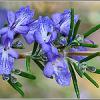[1] Ines Sanchez-Roman et al, Regulation of longevity and oxidative stress by nutritional interventions: Role of methionine restriction Experimental Gerontology Volume 48, Issue 10, October 2013, Pages 1030?1042
Dietary restriction (DR), around 40%, extends the mean and maximum life span of a wide range of species and lowers mtROSp and oxidative damage to mtDNA, which supports the mitochondrial free radical theory of aging (MFRTA). Regarding the dietary factor responsible for the life extension effect of DR, neither carbohydrate nor lipid restriction seems to modify maximum longevity. However protein restriction (PR) and methionine restriction (at least 80% MetR) increase maximum lifespan in rats and mice. Interestingly, only 7weeks of 40% PR (at least in liver) or 40% MetR (in all the studied organs, heart, brain, liver or kidney) is enough to decrease mtROSp and oxidative damage to mtDNA in rats, whereas neither carbohydrate nor lipid restriction changes these parameters. In addition, old rats also conserve the capacity to respond to 7weeks of 40% MetR with these beneficial changes. Most importantly, 40% MetR, differing from what happens during both 40% DR and 80% MetR, does not decrease growth rate and body size of rats. All the available studies suggest that the decrease in methionine ingestion that occurs during DR is responsible for part of the aging-delaying effect of this intervention likely through the decrease of mtROSp and ensuing DNA damage that it exerts.
In diets rich in carbohydrates, growth
factors stimulate cellular glucose uptake and the production of energy is carried out throughglycolysis. In this context, the NAD+/NADH ratio decreases, in turn inhibiting, in theory,sirtuins in the cytoplasm (Sirt2) and nucleus (Sirt1, Sirt6 and Sirt7). In fact, low Sirt1 andSirt6 activity generates a global increase in protein acetylation.
Maybe we should be eating more animal fat, less carbs and less proteins, like these guys http://high-fat-nutrition.blogspot.ca/
Also, trying to put everything together it seems that substances increasing methylation (methionine, B9, B12, etc) and acetylation (Apple cider vinagar, ALCAR, etc) make you feel better but live shorter, while substances that act as methyl sinks (NA, NAM, NR, NMN, etc via their metabolism) and deacetylators (NA, NAM, NR, NMN, etc via boosting NAD+) give you a long, miserable life.
Wait ALCAR makes you not live as long?




















































